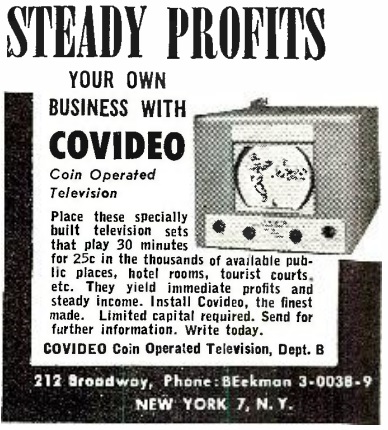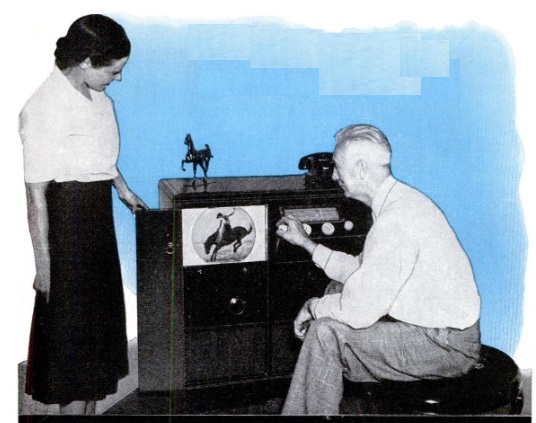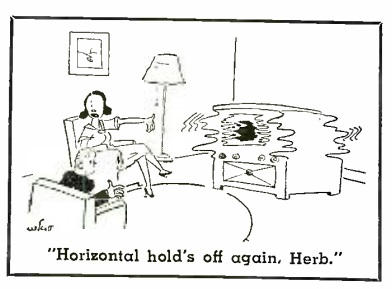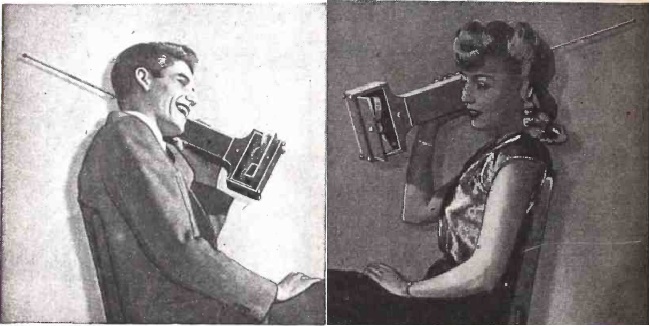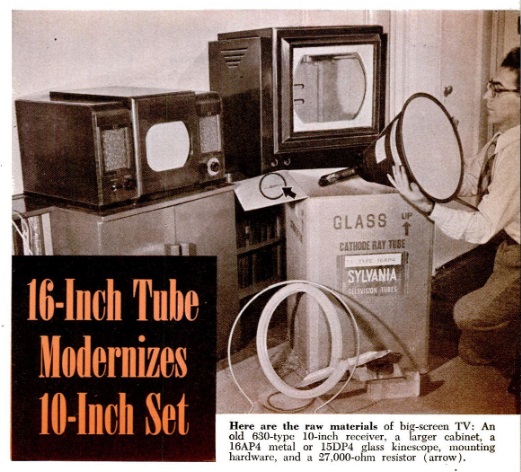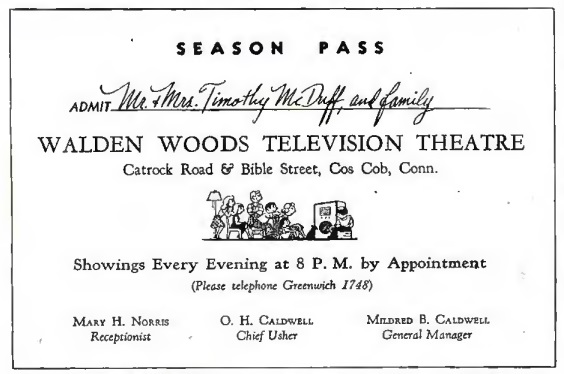This ad appeared 75 years ago this month, in the May 1950 issue of Radio Retailing, for the SILAVOX, manufactured by Skinner & Pelton, Inc., 100 N. LaSalle St., Chicago. The add-on device allowed you to use headphones with your television. For private listening without annoying others in the household, the speaker could be shut off. But for the hard of hearing, you could leave the speaker turned on. Both the headphone and the speaker had independent volume controls.
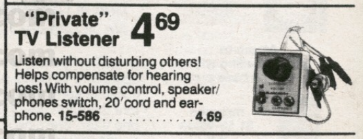 When I worked for Radio Shack in an earlier lifetime, we sold a similar device, shown here in the 1980 catalog. One day, we received an urgent communication from headquarters in Forth Worth that they were to be immediately removed from the shelves. I never heard the exact details, but I believe that someone had managed to electrocute themselves.
When I worked for Radio Shack in an earlier lifetime, we sold a similar device, shown here in the 1980 catalog. One day, we received an urgent communication from headquarters in Forth Worth that they were to be immediately removed from the shelves. I never heard the exact details, but I believe that someone had managed to electrocute themselves.
Many TV sets of the day had a hot chassis, meaning that there was a 50/50 chance that the chassis was hooked to the hot side of the AC power connection. In addition, there were extremely high voltages inside the set, and even with the set unplugged, there was a possibility that the capacitors still held a deadly charge. So the prospect of a consumer installing one of these was problematic. And if they did the job wrong (or maybe even if they did it right), there was a chance of high voltage running to the earphone attached to someone’s head. It’s actually surprising that they lasted as long as they did.


